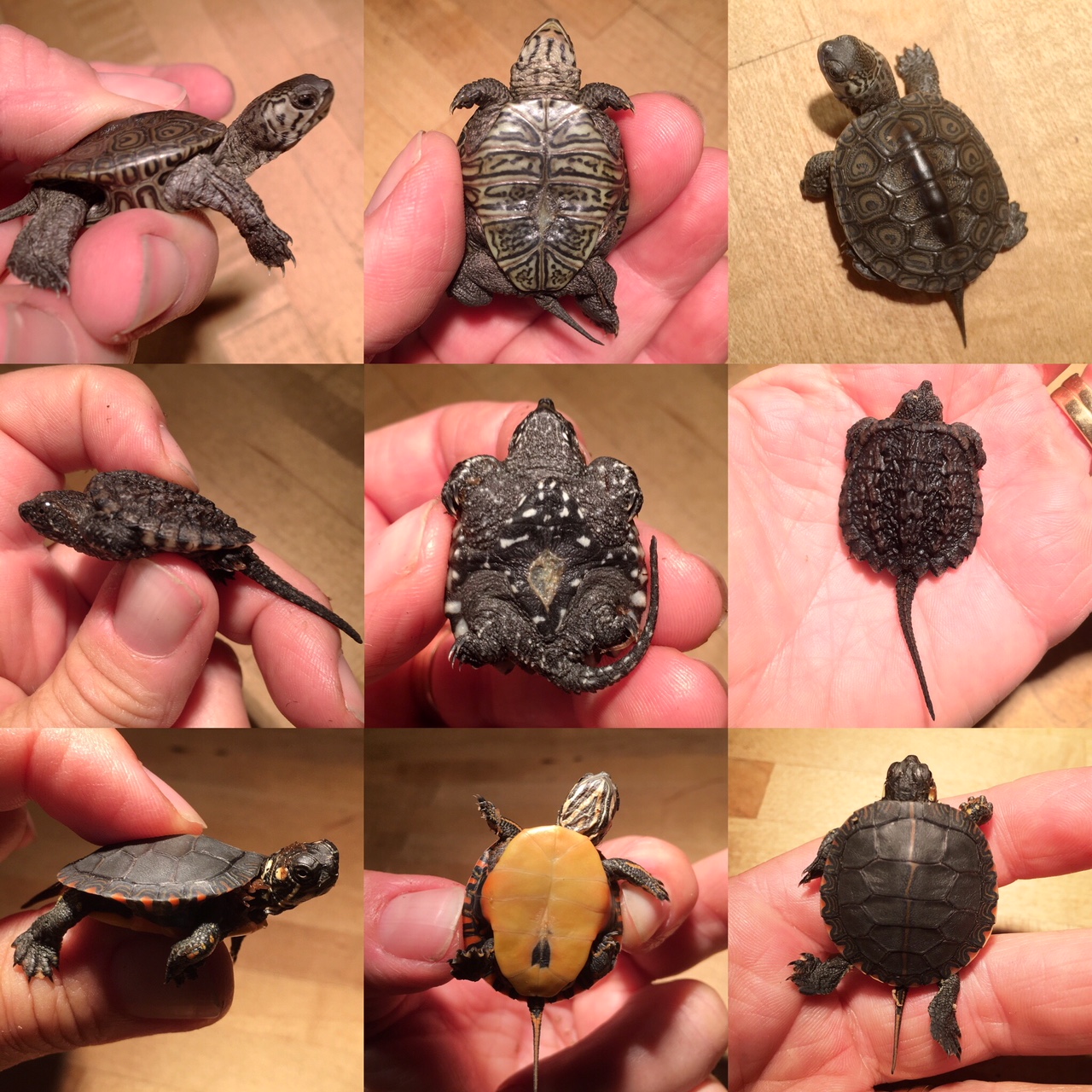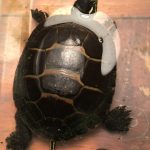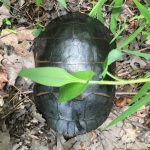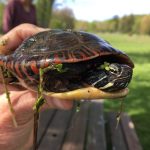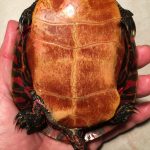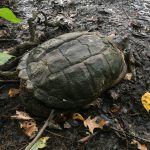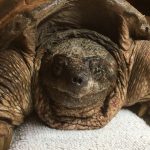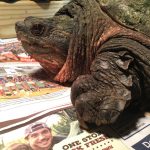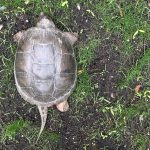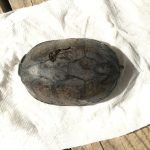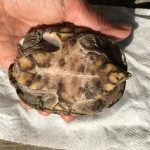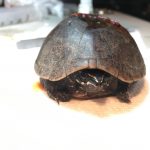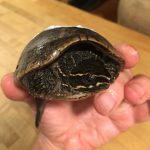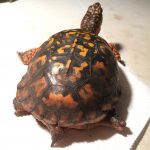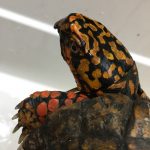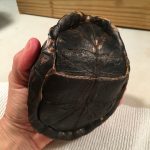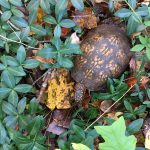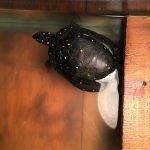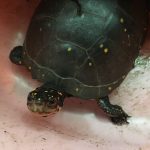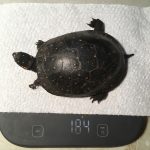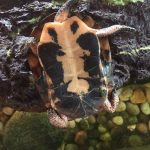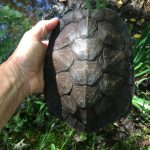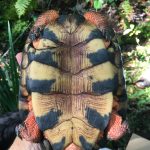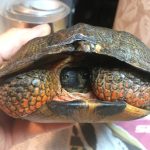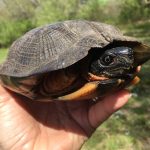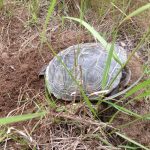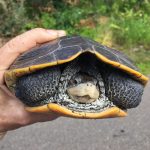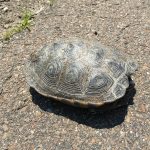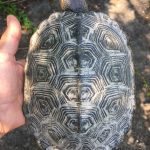Turtles are as different from one another as animals of any taxonomic group–think of bears, for example, which range from polar to black to grizzly to panda. Each has its own behaviors and needs. Some turtles are aquatic and some terrestrial, some can only live in fresh water while some prefer brackish (partly salty), some can handle strong currents but some require shallow, still water…and so on. Not counting sea turtles, which are migratory, Connecticut has eight species of turtles that live here year-round. It’s important to be able to identify the turtle you find because:
A) every species is different, and you need to know how to help–not hurt–that animal;
B) sightings of listed (endangered) species need to help protect its population;
C) it will help the rehabilitator know what to expect and how to help you help the turtle.
Identifying Connecticut Species
Sizes given are for carapace (shell) length. These are brief summaries;
for detailed information, visit the CT DEEP Wildlife page at
https://portal.ct.gov/DEEP/Wildlife/Learn-About-Wildlife/Wildlife-Fact-Sheets.
Listed species are protected by law; click here for more.
Eastern Painted Turtle
Chrysemys picta
Now the most common turtle in Connecticut, painted turtles are often seen basking on logs or rocks in calm water. They have a smooth, black carapace (shell) with olive colored lines and distinct red patterning around the edge (which is sometimes only visible from below), yellowish stripes on head and legs and a clear or rusty yellow plastron (bottom shell). Adults shell size is 4.5-6″
species of special concern
Common Snapping Turtle
Chelydra serpentina
Connecticut’s largest and most primitive-looking turtle, snappers can weight up to 40 pounds! At any size–even as hatchlings–they are most easily identified by their long, dinosaur-like tails. They may be very fleshy and have pointy noses and small plastrons (bottom shells). Snappers can be found in almost any type of wetland–even brackish estuaries..
Common Musk Turtle
Sternotherus odoratus
Sometimes mistaken for juvenile snapping turtles because of their pointy noses, long necks and tiny plastrons, Musk turtles are shy and rarely seen. They seldom leave their streams and ponds but do climb trees, which makes them prime targets for birds of prey. Also known as the Stinkpot for the musk it produces in self-defense, the musk is small, smooth and about the size of an oval hamburger.
Species of special concern
Eastern Box Turtle
Terrapene Carolina Carolina
An iconic species, Eastern box turtles are unmistakable. With their high-domed carapace, distinctive black and yellow markings and hinged plastron (bottom shell) that allows them to completely close up inside their shells, they are the state’s one primarily terrestrial species. As homing animals, they must remain in their home territory.
Species of special concern
Spotted Turtle
Terrapene Carolina Carolina
Once Connecticut’s most common turtle, the Spotted is now a listed species. Easily identified because its name describes its markings, this small black turtle with yellow-orange spots lives in shallow, slow moving wetlands such as swamps, bogs, vernal pools and small ponds. They are rarely larger than 5 inches long.
Species of special concern
Wood Turtle
Glyptemys insculpta
With a shell that resembles a layered, rough piece of wood, the wood turtle is aptly named. its body resembles a box turtle–heavily scaled, orange-to-brown legs and a similar head structure. Its unique plastron is yellow with symmetrical black splotches along each side. A denizen of clear-running streams and rivers and their nearby forests and fields,, adults can grow to 9 inches.
Species of special concern
Diamondback Terrapin
Malaclemys terrapin
CT’s only resident marine turtle, Diamondback terrapins occupy estuaries along the coast and are always found near salt water. Their colors and markings vary; gray to brown shells may be plain or vividly ringed, resembling the facets of a diamond. Their white to gray skin is usually speckled, and their plastrons are yellow to grayish. Their wide “clown” beaks, for crushing mollusks, are unique.
Critically Endangered
Bog Turtle
Glyptemys muhlenbergii
North America’s smallest and most endangered turtle, Bog turtles occupy very specific bog habitats only found in tiny areas of Connecticut, so are rarely, if ever, encountered. Only reaching 3.5 inches in length with a dark carapace somewhat resembling a smooth wood turtle (to whom it’s related), the bog turtle’s most recognizable feature is its yellow-to-orange head patch, which may be divided into two sections, like large ear muffs..
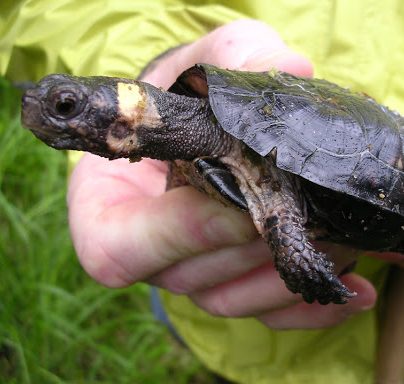
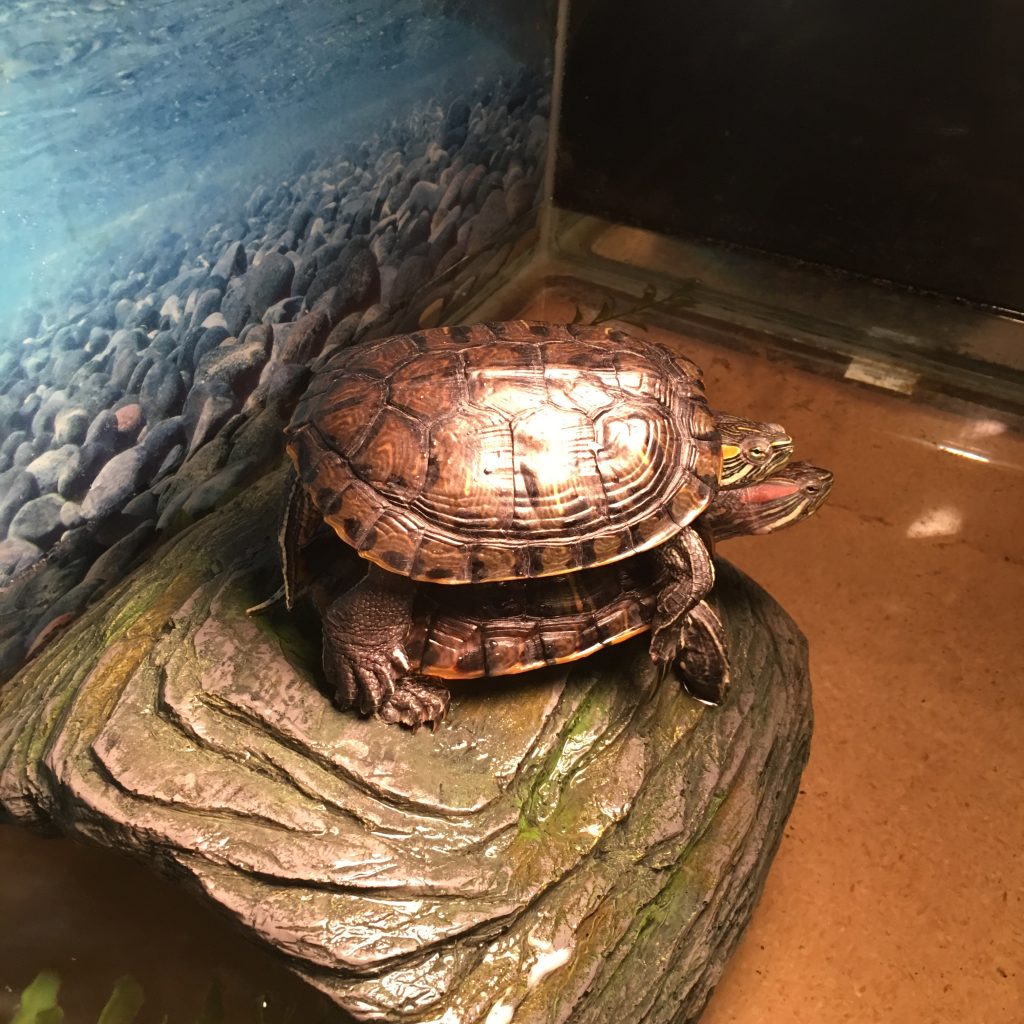
introduced species
Red Eared Slider
Trachemys scripta elegans
Sliders, the common pet store turtles, are also the most abandoned, and have become either an invasive or a naturalized species which is increasingly found in the wild. These problem turtles have lumpy, classic tortoise shell-type carapaces, striped heads with red and sometimes yellow ear patches, and yellow carapaces with black blotches. They can grow to be the size of dinner plates!
Hatchling Identification
The three most commonly seen species of turtle hatchlings can be tough to tell apart, but if you get it wrong and don’t deal with it correctly,
that baby may not survive. Here’s how to know who you’ve found!
Diamondback Terrapin
Olive green, distinct rings in each scute (section) of carapace, varied patterns of dots and stripes on body and plastron.
Common Snapping Turtle
Rough, jagged shell, very long tail, and pointy, protruding nose. Mostly blackish brown, but white speckles on plastron.
Eastern Painted Turtle
Smooth, round black shell, yellow stripes on head, red designs aound bottom edge of carapace, smooth yellow plastron.
